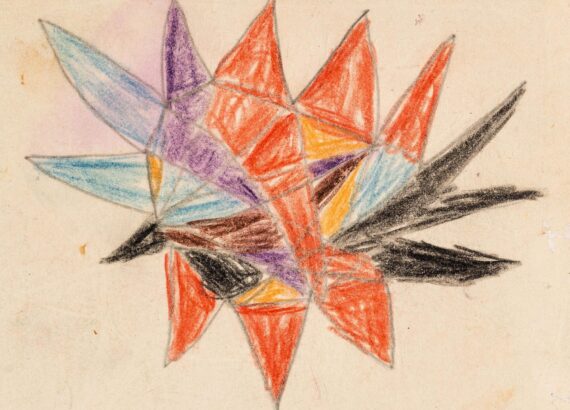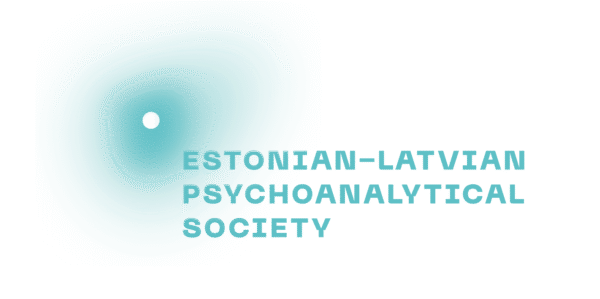Child and Adolescent Psychoanalysis

In the picture: drawing of a child from the Melanie Klein archive, Melanie Klein Trust
Silvija Lejniece, MD, Psychoanalyst
The founder of psychoanalysis for children is Anna Freud (1895-1982), daughter of the first Austrian psychoanalyst Sigmund Freud. During the 1920-ties, Anna Freud and Melanie Klein (1882-1960) contributed uniquely to the scientific study of child analysis and developed principles of the theory of child psychoanalysis.
The principles of analysis for children and for adults are the same, except that children do not arrive for therapy self-dependently; they are taken to by parents. Analysts’ cooperation with parents is indispensable in child analysis, as parents are a basic element of the internal and external life of their children.
The mental development of children, as well as the child’s age, relationships with parents, and model of parental family are all to be taken into account in cooperation with children. The mental pathology of parents, which can be manifested in the internal world of the child, is also of importance.
Like the use of language for communication in the world of adults, in a child’s world, the ways of expressing oneself are – playing, drawing, and symbolic messages, which serve for communication much more than language.
Play is one of the primary activities of children. Playing is common for children of all countries, and it has existed at all times. Children are taught to play by nobody; they do it spontaneously and with pleasure, without any predefined goal.
To comprehend the internal sense of a child’s play, even if it seems unclear at the beginning, is the task of an analyst. All child activities should not be looked upon only from the viewpoint of whether they prepare the child for living as an adult. Like any stage of childhood, also playing has some meaning in human life.
Parents are often in need of an explanation of a child’s behaviour, problems, and motives for a child’s actions. They need support, understanding and help from the analyst. By helping a child, the analyst may also help the whole family. Because of that, child and adolescent analysis includes help and insight in a sense which is notably more voluminous.
Adolescence, usually the age from 11-12 to 18-20, is one of the most essential stages in human mental development. As regards its intensity, adolescence can be compared only with the very first years of life. Thus psychoanalysis for adolescents takes a particular and important place within the field of psycho-emotional help for children and young people. Adolescent analysis, although it shares a lot with analysis of children and of adults, is neither adult nor child analysis.
Physical changes in adolescence are obvious. The mental changes may not always be visible, but they are equally important. Adolescent’s mind has to cope with internal tasks, like acceptance of one’s own physical changes, the personal identity of a female or of a male, and becoming self-dependent, as well as external tasks, like to recognise and choose being affiliated with new social groups, to react to the pressure towards integration of various social norms into oneself, and to build and understand principles for developing relationships.
In the process of child and adolescent analysis, definite ideas and notions are becoming expanded. Some of them can be pointed out.
- Understanding that unconscious desires and motives are of decisive importance. A child or adolescent can gradually achieve insight into his/her unconscious mind, and solve psychological problems, as they arise with the help of this understanding; however, it takes a special procedure and the help of a professional analyst.
- Understanding that there are always conflicting desires and bearing internal contradictions is inevitable. As a result, we normally avoid being aware of and remembering some of our wishes and certain things. While this is natural or even needed, it may lead to serious delusion or problems, too.
- Parental understanding of the decisive effect of a child’s or adolescent’s early experience on his/her future life and development. Basic mental structures develop during the first months and years of the child’s life in the relationship with actual parents and other relatives.
- Understanding transference. A child’s feelings, responses and mental dispositions, which are developed initially in his/her relationship with people who are the closest ones, do not disappear in further life. This kind of experience remains in the unconscious mind and is thus repeated, namely, transferred with no awareness and no modification, to numerous other relationships bearing any emotional meaning. Transference is a universal trait of the human mind; however, it may render our emotional responses and feelings also erroneous and delusive.
Like in adult analysis, also a child and adolescent analyst builds no plan and no structure for the contents of sessions (encounters), and if therapy is on a long-term basis, it sets no limits for the direction of the child’s thinking. The therapeutic process includes analysis of the child’s associations, play, drawings, current experience, relationships and transference. Technically, this is carried out by confrontation, clarification, interpretation and working through. Regularity of sessions is an important condition. The place for sessions, like the time (the weekday and the hour, 30-45 minutes long), remains unchanged. The safe and constant place thus provided lets the analytic relations develop and achieve a good therapeutic result.
In the course of analysis, the analyst helps the child to become aware of, comprehend, and accept his/her own feelings, as well as to identify and comprehend unconscious conflicts and unhealthy ways of behaviour. As a result, the child’s symptoms improve (they may include conduct disorders, fears, psychosomatic disorders, difficulties of adaptation, relationship problems, aggressive and destructive behaviour, suicidal ideation, eating disorders, and more). A child and adolescent analyst is indirectly working with the whole family. Once family relationships become healthier, the parents cooperate better with each other, with their children and other relatives, as well as with the analyst.
Child and Adolescent Psychoanalysts
Silvija Lejniece – Child and Adolescent psychoanalyst
Helen Tartes-Babkina – Child and Adolescent psychoanalyst
Indra Upmiņa- Child and Adolescent psychoanalyst
Aleksandrs Moškins- Child and Adolescent psychotherapist
Viktors Ozoliņš- Child and Adolescent psychotherapist
